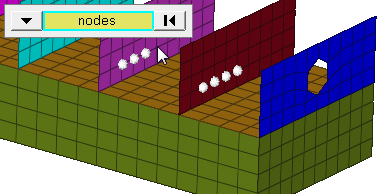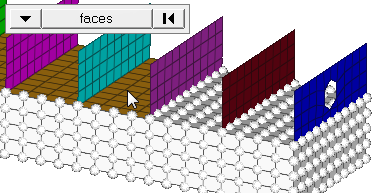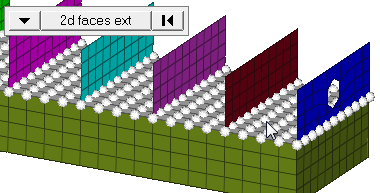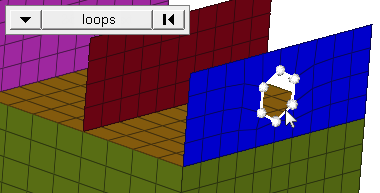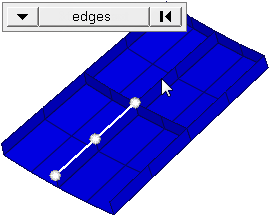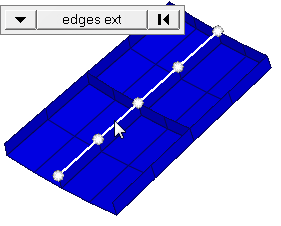Temperatures Panel
Use the Temperatures panel to create temperature constraints.
Location: Analysis page
Temperatures constraints are created by applying a load that represents temperatures to nodes, components surfaces, sets, points, or lines.
Temperatures are load config 5 and are displayed as a vertical line with the letter T at the top.
Create Subpanel
| Option | Action |
|---|---|
| entity selector | Select entities to
which temperatures will be applied. In any case, the forces are applied to nodes; this selection simply determines how those nodes are selected. Geometric points select the nodes at which they exist. Comps select all of the nodes contained within the chosen component. When nodes is selected,
use the switch to change the selection mode.
|
| value = |
|
| relative size / uniform size |
By default, loads are displayed relative to the model
size.
|
| label loads | Display the load's text labels in modeling window. |
| load types | Select a load type. |
| face angle / individual selection |
|
| edge angle |
Split edges that belong to a given face. When the edge
angle is 180 degrees, edges are the continuous boundaries of faces. For smaller
values, these same boundary edges are split wherever the angle between segments
exceeds the specified value. A segment is the edge of a single element.
Important: Only available when the entity selector is set to nodes and the
selection mode is set to free edges, free edges ext, edges, or edges
ext.
|
Update Subpanel
| Option | Action |
|---|---|
| loads | select the loads to modify. |
| value = |
|
| relative size / uniform size |
By default, loads are displayed relative to the model
size.
|
| label loads | Display the load's text labels in modeling window. |
| load types | Select a load type. |
Command Buttons
| Button | Action |
|---|---|
| create | Create the new load. |
| create/edit | Create the new load and open its property card in edit mode. |
| reject | Revert the most recent load creation. |
| review | Click
review, then select the temperatures
to review on your model. After you select each temperature, the value of the temperature is displayed. |
| update | Change the selected load(s) to use the currently-specified characteristics. |
| return | Exit the panel. |
Equations allow you to create force, moment, pressure, temperature or flux loads on your model where the magnitude of the load is a function of the coordinates of the entity to which it is applied. An example of such a load might be an applied temperature whose intensity dissipates as a function of distance from the application point, or a pressure on a container walls due to the level of a fluid inside.
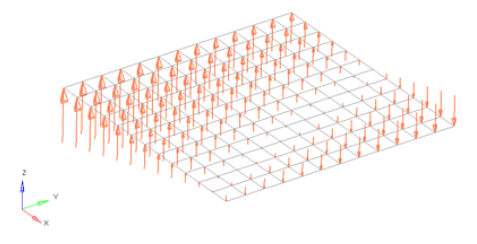
Figure 11. Flat Plate with a Linear Function for an Applied Force Magnitude = 20 – (5*x+2*y). The flat plate is 20 x 20 units, lying in the X-Y plane with the origin at the center.
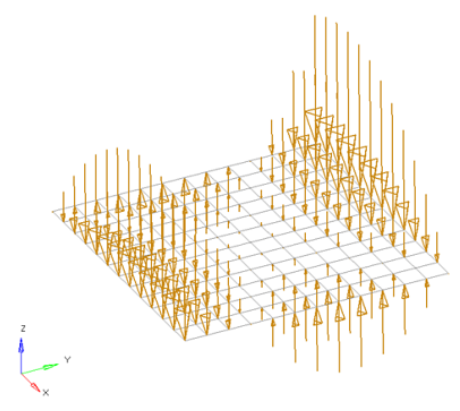
Figure 12. Flat Plate with a Polynomial Function with Magnitude = x^2-2y^2+x*y+x+y. The flat plate is 20 x 20 units, lying in the X-Y plane with the origin at the center.
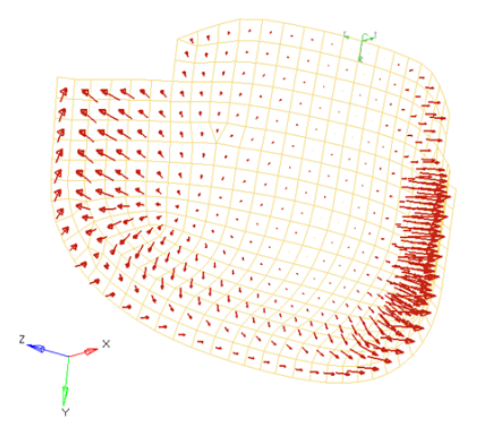
Figure 13. Curved Surface with a Polynomial Function for an Applied Pressure Magnitude = -((x^2+2*y^2+z)/1000). The pressure function is defined in terms of the cylindrical coordinate system displayed at the top edge of the elements.
